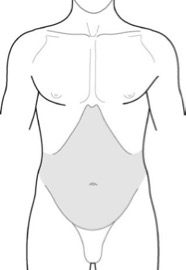The muscles of our pelvic floor play a BIG role in our daily life; from breathing, to movement, holding your organs in your body, going to the bathroom, having sex, having babies, and recovery.
Pretty important things I would say! But honestly, how often do we think about these muscles? It would be amazing if they were like the involuntary muscles of your heart that just work without you thinking about them, but they are not! They are voluntary muscles, which means we must think about them to use them and we must condition them to keep them functioning properly.
Some of the roles your pelvic floor is involved in include:
|
Role |
Men |
Women |
|
Urinary Continence |
Yes |
Yes |
|
Bowel Control |
Yes |
Yes |
|
Prostate Health |
Yes |
No |
|
Birthing and Postpartum Recovery |
No |
Yes |
|
Sexual Performance |
Yes |
Yes |
|
Breathing |
Yes |
Yes |
|
Organ Support |
Yes |
Yes |
|
Spinal Support |
Yes |
Yes |
|
Emotional Health |
Yes |
Yes |
|
Core Stabilization in Movement |
Yes |
Yes |

Definitions:
Pelvic Floor – the muscular base of the abdomen, attached to the pelvis.
Voluntary Muscles – muscles that can be controlled by the conscious mind. These muscles are attached to bones of the skeleton, thus called the skeletal muscles.
Involuntary Muscles – muscles that cannot be controlled consciously. These muscles are mainly controlled by the autonomic nervous system and are found in the heart and internal walls of the stomach, intestines, uterus, and blood vessels.
Powerhouse – the area between your lower ribs and pelvic floor.

Theory:
It is not surprising that the foundation of your Powerhouse, the essence of Pilates….is your pelvis! Joe believed that the major emphasis of strengthening and lengthening muscles should be placed upon the muscles of the center, or core of the body and referred this region as the powerhouse of the body.
Notice the emphasis of Strengthening and Lengthening. One of the important aspects of the pelvic floor muscles is that you need to be able to activate them AND relax them. Relaxing these muscles is just as important as contracting them, which can be a new concept for many. We are conditioned to think that to make something stronger you need to make it tighter. Tight muscles do NOT equal strong muscles. A strong muscle is able to both fully contract and fully release.
The release is a function that is largely affected by our emotions similar to our neck and shoulders where we also tend to hold emotions like stress and tension. Think about how many times you have been cued to relax your shoulders in class. You don’t even know you’re doing it. The muscles in your pelvic floor are affected the same way, leading to a chronically contracted pelvis which can affect many of our daily life functions.
Application:
Pelvic health is a topic that is widely underestimated and misunderstood. There are many cultural taboos associated with this area and a certain level of embarrassment when talking about it. As a result of this we generally don’t pay attention to this area until there is something wrong and even then, we don’t understand the importance of our pelvic floor.
This month we focus on pelvic health to help bring awareness to this part of our body and the many facets affected by it. Our goal is to help you fall in love with your pelvis and harness its infinite power.
Depending on where you are in this love story, we will guide you all month long in each class to find deeper connections with your pelvic floor. If you are curious and want to work on it at home or learn more here are some suggested sources:
- Men – Pelvic Floor Activation
- Women – Pelvic Floor Activation
- Men & Women – Pelvic Floor Release
- Laetitia Richter, SFP Education Director